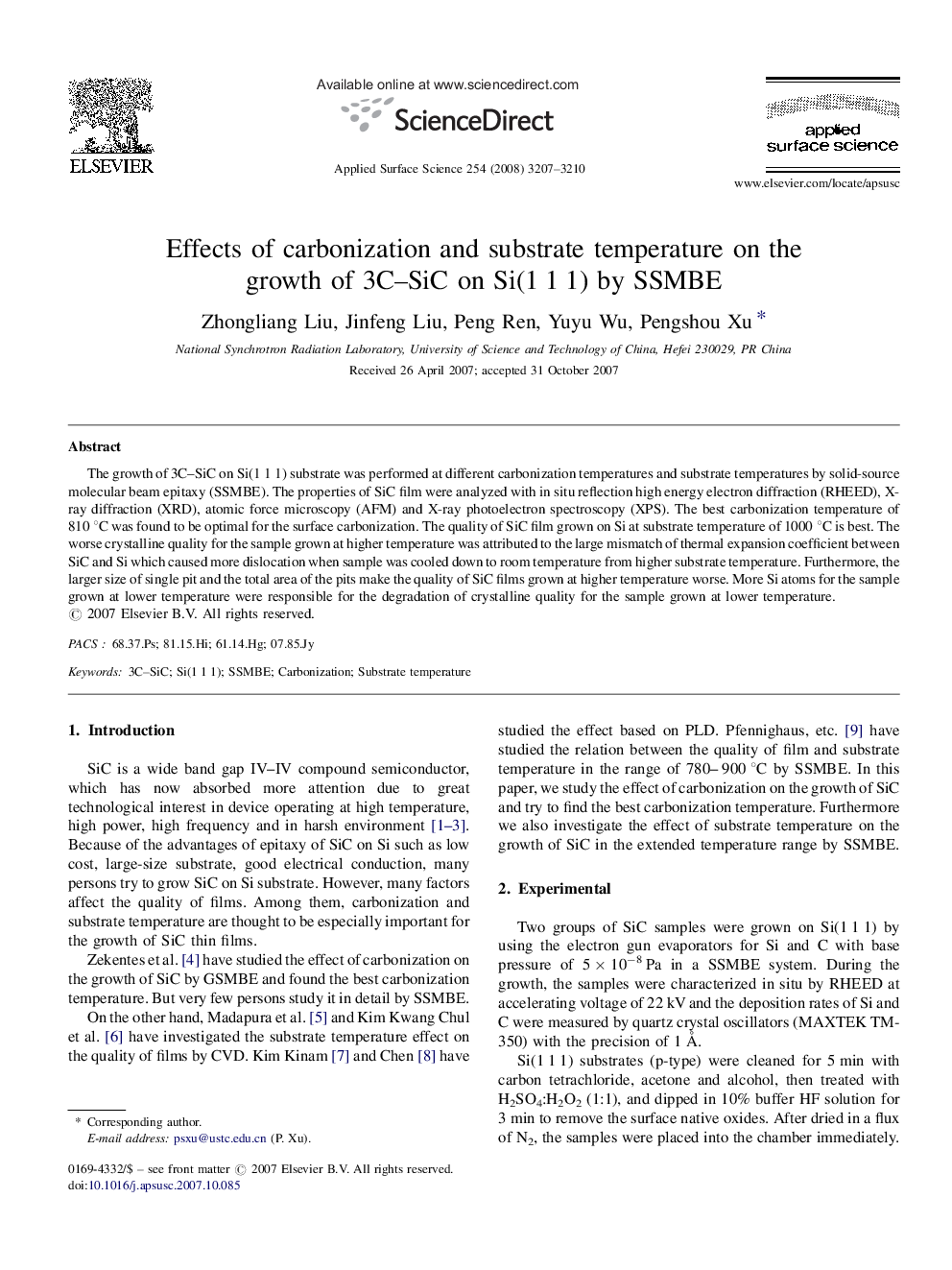| Article ID | Journal | Published Year | Pages | File Type |
|---|---|---|---|---|
| 5365363 | Applied Surface Science | 2008 | 4 Pages |
The growth of 3C-SiC on Si(1 1 1) substrate was performed at different carbonization temperatures and substrate temperatures by solid-source molecular beam epitaxy (SSMBE). The properties of SiC film were analyzed with in situ reflection high energy electron diffraction (RHEED), X-ray diffraction (XRD), atomic force microscopy (AFM) and X-ray photoelectron spectroscopy (XPS). The best carbonization temperature of 810 °C was found to be optimal for the surface carbonization. The quality of SiC film grown on Si at substrate temperature of 1000 °C is best. The worse crystalline quality for the sample grown at higher temperature was attributed to the large mismatch of thermal expansion coefficient between SiC and Si which caused more dislocation when sample was cooled down to room temperature from higher substrate temperature. Furthermore, the larger size of single pit and the total area of the pits make the quality of SiC films grown at higher temperature worse. More Si atoms for the sample grown at lower temperature were responsible for the degradation of crystalline quality for the sample grown at lower temperature.
